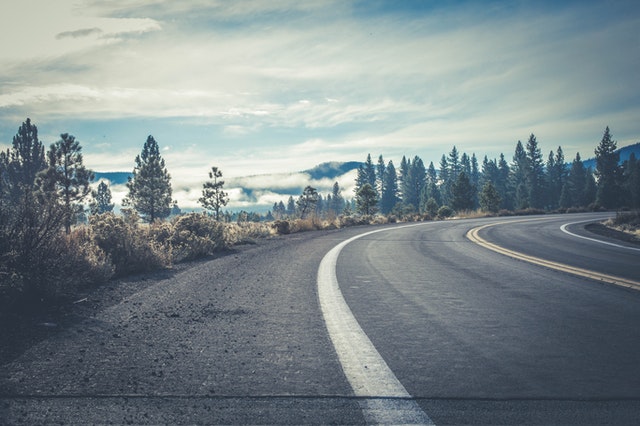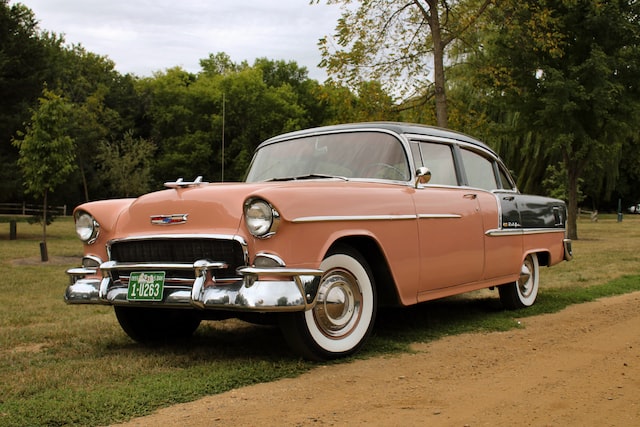In the United States of America, there are nearly four million miles of road. These highways pass through deserts, mountain ranges, vast forests, stunning coastlines, small towns, and some of the world’s major cities. There are several sorts of roads in the United States, and you will most likely travel on many of them over your driving career. This diverse network of roads includes anything from country roads to eight-lane highways. It is critical for drivers to understand how each of these types of roadways works and how to drive safely on them.
A road is a paved path, a route, or a highway that allows you to go by vehicle to your destination. Roadways are classed according to a variety of factors, and each of these factors is further divided into several types of roads. In the next paragraph, we provide a quick summary of each type of road and the phrases that are usually used while discussing roads.

Different Types of Roadways
Roads are classed into several types based on material, traffic, location, function, and many other factors. Road transportation is an important network for each country, and as road access increases, speed decreases. In this paragraph, we’ll go through the six types of roads in the United States.
- Dirt roads
Although dirt roads are sometimes mocked, they are nonetheless common in many parts of the United States. Dirt roads are usually found in rural residential areas or on private roads that are maintained by locals. Dirt roads do not have pavement markers for obvious reasons. Make sure your car is parked on the correct side of the road and that you are not passing. Dirt roads are highly prone to the elements, and in heavy rain, they may become impassable.
- Rural roads
Rural roads, sometimes known as “back roads,” make up a significant section of our country’s highways. These roads are a step higher than dirt roads and may or may not have pavement markings. Because the cities and counties that are responsible for them do not have access to resources to make regular repairs, rural roads are frequently of worse quality than urban roads. While traveling on rural roads, you may come across farm equipment, all-terrain vehicles (ATVs), and even horse-drawn wagons.
Always give these sorts of vehicles the right of way and keep a safe space between them and your own vehicle. While traveling on rural roads, there is also a larger chance of seeing wildlife. Slow down and keep an eye out for deer, raccoons, and other animals. Rural roads, on the other hand, can provide some of the most picturesque journeys. If you have the time, taking the back roads to your destination will frequently reward you with a stunning view.
- Metropolitan roadways
Inner-city or metropolitan highways are second on the list in terms of size, despite the fact that they are frequently among the busiest in the country. These roads are typically two or four lanes wide and are split into a grid pattern with several traffic lights and stop signs. Metropolitan avenues, boulevards, and parkways may be highly stressful depending on where you are traveling. These roadways are clogged with taxis, bicycles, scooters, and transit buses at all hours of the day. If you are a new driver who is nervous about driving in the city, it is preferable to take the support of a more experienced driver. If you’re up for it, make sure you know your route, keep an eye out for crossing pedestrians, and avoid being distracted by the lively city outside your window.
Read more >> 8 Most Common Types of Intersection Roads
- Suburban roads
Suburban roads are among the safest in the country, making them ideal for young drivers to improve their skills. Although suburban highways pass through both commercial and residential areas, they are rarely very busy. In suburban regions, you’ll come across a variety of crossroads, traffic scenarios, and road styles. Keep an eye out for young children or families crossing the street in school zones, which are often on suburban roads. Pets on the loose, runners, bikers, and people walking with baby carriages are all of the particular concern in suburban neighborhoods.
- State highways
Before the interstate system, state roads were the most prevalent form of the route for long-distance travel. Highways normally have one or two sides. In contrast to interstates, driveways and other roads can link to highways, and traffic lights manage vehicle flow. Highways have a greater speed limit than other roads in the region, usually between 50 and 65 miles per hour. When changing lanes on state roads, utilize merging techniques similar to those used on interstate highways. Keep in mind that state roadways may have a higher concentration of transfer trucks. State traffic police or state troopers with statewide jurisdiction frequently police these highways.
- Interstate highway system
The interstate highway system in the United States connects every large city, as well as many little ones, and allows commuters, passengers, and transfer trucks to move rapidly and effectively from one location to another. The design of interstate highways is universal. With the exception of cities and locations with significant traffic volumes, all have four lanes. A ramp system is used to access and leave interstate highways. On interstate highways, there are no connecting roads or driveways. Most are reasonably straight and level, and state and national tax payments help to keep them in good shape.
On interstate roads, you may anticipate traveling at speeds of roughly 70 miles per hour, with minimum speeds in some regions. On interstates, pedestrians, bikers, and SMVs (slow-moving vehicles) are not permitted. On lengthy travels, periodic rest areas give motorists a secure place to stop, use the toilet, and stretch their legs.
- Toll roads
Toll roads are privately operated roadways that charge a small fee in exchange for smooth driving or a faster route between popular attractions. Toll roads are highly common in the Northeast and sparsely populated parts of the West. When entering and departing toll roads, you will have to pay a toll. Some may collect money through a ticket system, while others may ask you to pay a one-time fee while entering or exiting the route.
Conclusion
As you can see, there are several types of roadways, each with its own set of functions and uses. There is a route to suit your needs, whether you want to stroll through the countryside with horse-drawn carriages or speed through a large metropolis without missing a beat. Just keep in mind that not all roads are made equal and that each must be driven on appropriately.
If you want to get more information to stay safe on the road, visit our website and take our free DMV practice test to obtain all the necessary knowledge. Let’s get started now!

UT Utah License Renewal: A 2024 Comprehensive Guide
Discover the ultimate guide to Utah license renewal! This comprehensive guide delves into the intricacies of renewing your driver's license in Utah,...
February 13, 2023

South Carolina S.C. Driver's License Renewal
The South Carolina S.C. driver's license renewal process is designed to be comprehensive, taking into consideration eligibility requirements, renewal methods,...
February 13, 2023

Pennsylvania PA DMV License Renewal: A 2024 Full Guide
The Pennsylvania PA DMV license renewal process is designed to be comprehensive, taking into consideration eligibility requirements, renewal methods,...
February 10, 2023

